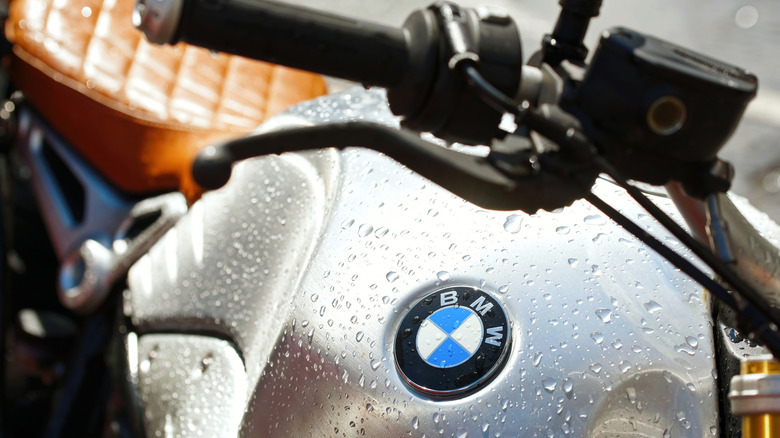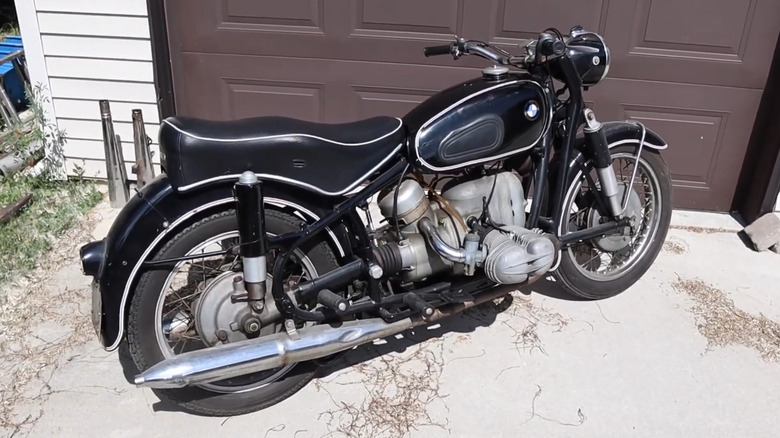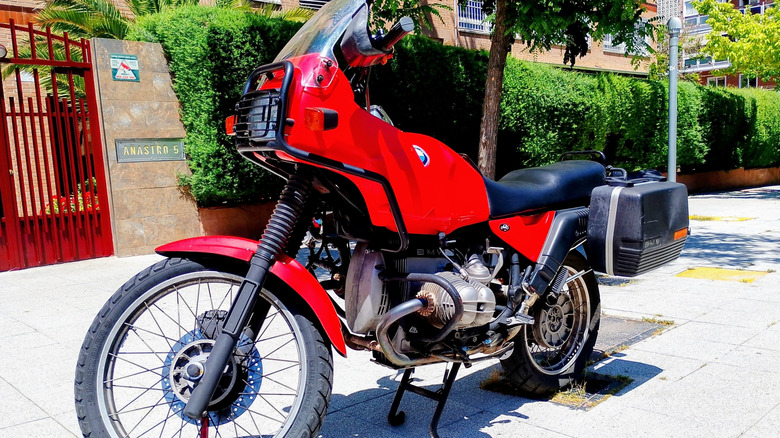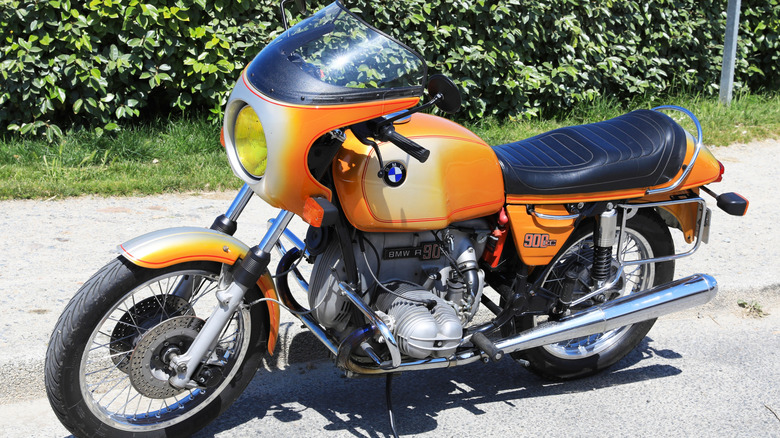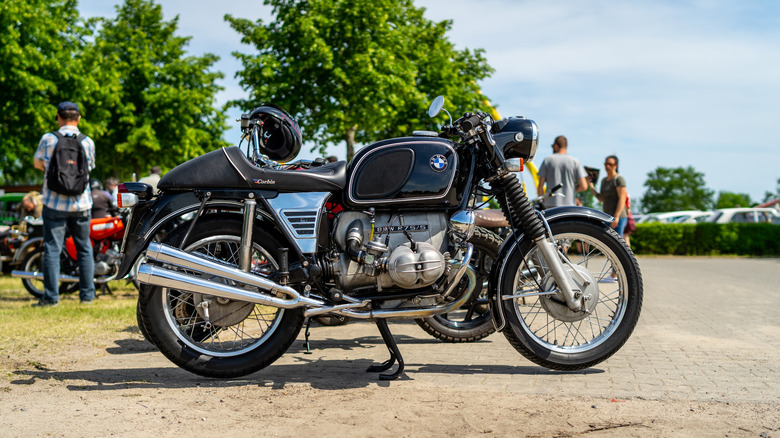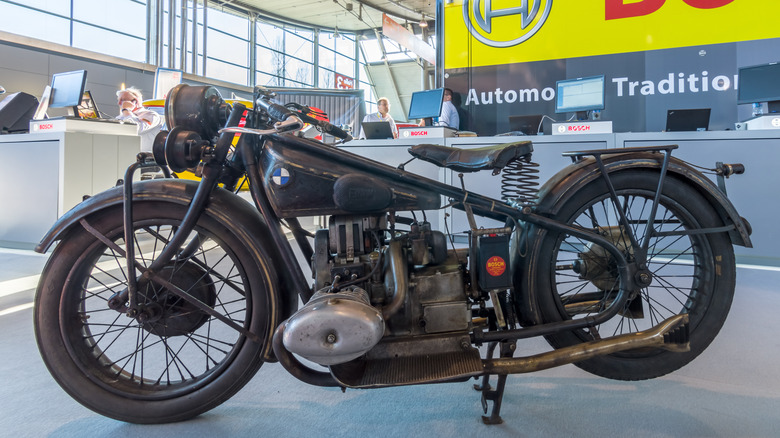5 Old-School BMW Bikes That Need To Make A Comeback
Motorcycles come and go, but the ones that truly matter leave a mark long after production ends. BMW is no stranger to this cycle. Over the decades, the German manufacturer has built machines that didn't just sell well, but helped shape entire categories. Some introduced new technology, others proved themselves on the toughest rally stages, and a few simply stood out for their design and presence. Eventually, each one was retired or evolved into something new, but the originals still hold a place in history.
While BMW continues to produce some of the most advanced motorcycles on the market, there are older models that enthusiasts can't stop talking about. These bikes were innovative, and in many cases, years ahead of their time. To figure out which classic BMW motorcycles deserve a modern revival, we focused on models that shaped the brand's identity while standing out for engineering, design, or cultural impact. Each bike on this list marked a turning point, whether through racing success or by redefining what a BMW could be. We considered period reviews, production numbers, and long-term reputation among owners. The goal of those bikes wasn't just speed or rarity, but lasting influence. They defined what a BMW motorcycle could be, and today, we can't help but wish they'd make a comeback with modern updates.
BMW R69/R69S
The R69 series motorcycles from BMW, produced from 1955 through 1969, have become the most famous flat twin models in the brand's history. The first R69 model entered the market in 1954 through its development from earlier postwar boxers. It used a 594cc air-cooled engine to generate 35 horsepower while reaching speeds above 100 mph. The motorcycle included BMW's innovative chassis design with Earles-pattern leading link forks, swingarm rear suspension, and enhanced brakes, which provided excellent performance for both solo and sidecar operation. These improvements made its price exceed that of standard British twins from that era, enabling BMW to prove itself as a manufacturer of dependable motorcycles with precise engineering.
The R69S model entered the market as BMW's high-performance motorcycle when it debuted in 1960. It shared the same appearance as the standard R69, but its engine underwent modifications to produce 42 horsepower, achieve a 9.5:1 compression ratio, and use two 26mm Bing carburetors. The R69S handled better at high speeds because of its four-speed transmission with closer ratios and its hydraulic steering damper system. The vehicle reached 110 mph top speed through the addition of a crankshaft vibration damper, which provided smooth operation. The vehicle proved to be extremely stable during endurance racing at the 24-hour Bol d'Or, where the bike showed its ability to withstand long periods of use.
Production of the R69S ran until 1969, with just over 11,000 built. The U.S.-only R69US variant used telescopic forks instead of Earles forks. Both the R69 and R69S motorcycles offered engineering excellence and long-distance dependability, making them highly valuable and sought after by collectors even today, despite not being cheap, nor the most powerful bikes of their time.
BMW R80 G/S
The BMW R80 G/S model entered the market in 1980 when adventure bikes did not exist as a distinct category, yet its 798cc air-cooled boxer twin engine delivered 50 horsepower for dual on-road and off-road use. The bike achieved both road stability and impressive dirt performance because of its 410 pounds wet weight, monolever swingarm, and basic telescopic forks. Its extended suspension system, 21-inch front wheel, and laid-back seating position provided comfort during long rides, while its flat-twin engine produced smooth torque instead of raw power.
The R80 G/S quickly showed its potential on the toughest stage. In 1981, Hubert Auriol rode one to victory in the Paris-Dakar Rally, followed by more wins in 1983, 1984, and 1985 with Gaston Rahier. These results cemented the G/S as a legitimate off-road machine despite its size, and the Dakar specials stretched displacement to over 1,000cc and output to 75 horsepower. Even the standard bike built its reputation on rugged simplicity. Owners praised it for being easy to maintain, with few electronics and straightforward carburetion.
On long trips, the R80 G/S proved tough and forgiving. Riders have taken them across continents with little more than basic tools, spares, and some ingenuity. Its reliability made it a favorite among overlanders, and its minimal electronics meant fewer points of failure in remote areas. Today, the R80 G/S is seen as the original adventure motorcycle and one of the best bikes BMW ever made.
BMW R90S
The BMW R90S arrived in 1974 and instantly changed how riders viewed the brand. Before it, BMW was seen as conservative, producing dependable but uninspiring touring bikes. The R90S, developed under Bob Lutz with styling by Hans Muth, gave BMW its first true superbike. It was Bob's vision that gave BMW one of its best motorcycles ever. It combined performance, long-distance comfort, and distinctive looks in a way that no other machine of the era managed to.
At its core was a 898cc air-cooled boxer twin producing 75 horsepower. With Dell'Orto pumper carbs, a five-speed gearbox, and twin front discs, it delivered real performance. Cycle World clocked it at 123 mph, and in roll-on contests it could even outpace Kawasaki's Z1. But raw speed wasn't the whole story. The R90S was also one of the first motorcycles to blend sport and touring. The café-style fairing reduced fatigue at speed, and BMW offered integrated hard luggage that made it practical for long trips.
Styling sets it apart just as much as performance. The Silver Smoke paint, hand-faded by skilled workers, gave the R90S a unique presence. Later, the Daytona Orange version added even more flair. Riders could see it was different, and so could buyers who had never considered BMW before. On the track, Reg Pridmore's 1976 AMA Superbike title on an R90S proved it had racing credibility too. By combining style and performance, the R90S secured BMW's motorcycle division at a time when closure was being considered.
BMW R75/5
BMW introduced the /5 series to the market in 1969 as the Japanese motorcycle industry moved toward building faster and more fashionable bikes. The R75/5 achieved its status as the main model of the series because it combined performance capabilities with design elements, which helped BMW regain its market leadership position. It was also the debut of the now-iconic "Airhead" Type 247 boxer twin, an engine layout that defined BMW motorcycles for the next quarter-century.
The R75/5 operated with a 745cc air-cooled flat-twin engine which delivered 50 horsepower at 6,200 rpm together with 44 lb-ft of torque at 5,000 rpm. The four-speed gearbox of the bike, combined with shaft drive, enabled speeds up to 109 mph, while its 460-pound weight made it the lightest 750cc bike on the market during that period. The new motor design solved serviceability problems that existed in the /2 series by removing the need for oil slinger maintenance and creating easier upkeep for extended use.
The bike received stability and enhanced solo handling through its steel double-cradle frame, telescopic front forks, and twin rear shocks. The 12-volt system with electric starter distinguished itself from previous models and represented a modern improvement. The bike received new paint colors, and the "Toaster" chrome-sided fuel tank became a distinctive feature when it first appeared in 1972.
The short and long-wheelbase versions continue to spark debate about which one performs better, but both models have proven their ability to last. Many R75/5s remain on the road today, some with hundreds of thousands of miles, proving why this model is considered one of BMW's most important motorcycles.
BMW R63
The BMW R63 arrived in 1928 as the company's first 750cc overhead-valve motorcycle and immediately stood out as the most powerful bike BMW had offered at the time. Producing 24 horsepower at 4,000 rpm from its 735cc flat-twin engine, it was capable of reaching 74 mph. For the late 1920s, that was an impressive performance, especially from a brand still building its reputation in motorcycles.
Designed as a short-stroke sports machine, the R63 was aimed at riders who wanted speed and modern engineering. Its "flat tank" styling, with the fuel tank positioned low between the frame rails, gave it a lean, Bauhaus-inspired look. Paired with its OHV motor, the bike quickly became linked to BMW's growing motorsport success, further boosting its appeal. But with a price of 2,100 Reichsmarks, it was out of reach for many, which limited production to just under 800 units before it was replaced by the R16 in 1929.
Mechanically, the R63 was advanced for its time, but not without flaws. The three-speed gearbox was clunky, the brakes were weak compared to British rivals, and the leaf-sprung front fork offered only average handling. Still, it had solid torque and delivered a satisfying top speed for long touring, even if it couldn't match contemporary Nortons or Sunbeams on the track. Today, the R63 is highly collectible, both for its rarity and its role in shaping BMW's racing machines. It served as the foundation for supercharged WR750 record-breakers, proving the engine's potential far beyond its brief production run.
